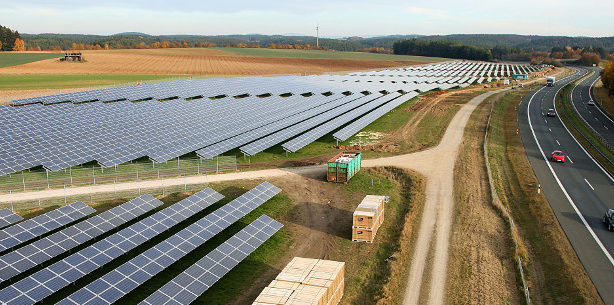The Paris-based International Energy Agency (IEA) has today published a new report that states solar PV was the world’s fastest-growing energy source in 2016.
Regularly criticized for its conservative estimates on renewable energy deployment and forecasted growth, the IEA has, in its Renewables 2017 report, suggested that renewable energy can reach 1,000 GW globally by 2022 – equalling half of the world’s current coal power capacity and doing so in a vastly shorter timescale.
The report found that solar PV capacity grew by 50% in 2016, driven by sustained growth in China, the U.S. and India. Based on this strong performance, the IEA has raised its renewables forecast for 2017 by 12% on last year. “What we are witnessing is the birth of a new era in solar PV,” said IEA executive director Fatih Birol. “We expect that solar PV capacity growth will be higher than any other renewable technology through 2022.”
The IEA expects China, the U.S. and India to continue dominating the renewables landscape, and forecasts that two-thirds of all new renewable capacity through 2022 will be installed in these three nations. By 2022, installed renewable electricity will reach more than 8,000 terawatt hours, the IEA said – the equivalent of the power consumption of China, India and Germany combined.
This growth will mean that renewables meet 30% of the world’s power needs by 2022, up from 24% in 2016. “The growth in renewable generation will be twice as large as that of gas and coal combined,” said the report. However, despite the IEA suggesting that renewables will continue to close the generation gap with coal by half in five years, many climate experts still feel that the IEA continues to underestimate renewables’ potential.
“2016 was another record high year of renewable installs and unexpectedly large renewable energy cost deflation, again highlighting the IEA’s continued underestimation of both these two trends driving the increasingly global market transformation,” said Tim Buckley, director of energy finance studies at IEEFA, an Australian energy analyst.
Paolo Frankl, the IEA’s head of renewable energy, warned that despite the tumbling costs of solar and wind power, there remains a risk that record-low prices could prove off-putting for developers, and thus the IEA continues to err on the side of caution.
“Renewables may well become even cheaper than fossil fuel alternatives over the next five years,” Frankl said. “However, be careful because this does not automatically mean they are competitive and investment will flow. That depends on the risk of investment and whether remuneration flows make a project bankable or not.”
On the same day of the report’s publication, France’s EDF was part of a consortium that won a tender in Saudi Arabia to develop a solar project for just $0.0178/kWh – by far the lowest price ever seen for PV. A further six bids accepted were all under $0.03/kWh for solar, suggesting that there remains strong appetite to develop PV as cheaply as possible, provided the conditions are suitable.
India, China and the U.S.
The contrasting fortunes of the three largest solar markets – Japan being edged from the top table by India this year – highlight how the solar industry ebbs and flows. The IEA report found that China accounted for almost half of 2016’s global solar PV expansion, with data showing a similar story this year. China’s solar thirst is driven by concerns about air pollution and capacity targets set out in the country’s 13th five-year plan to 2020. Grid integration remains a key challenge for China, the IEA added.
India’s eye-catching growth is spurred by the National Solar Mission, which has targeted a goal of 100 GW of solar by 2022. “India’s move to address the financial health of its utilities and tackle grid-integration issues drive a more optimistic forecast,” said the IEA. “By 2022, India’s renewable capacity will more than double. This growth is enough to overtake renewable expansion in the EU for the first time.”
In the U.S., current political uncertainty stemming from the Suniva Section 201 case could, the IEA said, alter the economic attractiveness of renewables, thus hampering growth out to 2022. Frankl, though, believes that the vastly reduced cost of solar and wind will likely limit the impact wrought by President Trump. “There is a risk that the U.S. ITC imposes tariffs on imports of Chinese solar panels,” Frankl said. “But at the moment our forecast remains strong.”
This content is protected by copyright and may not be reused. If you want to cooperate with us and would like to reuse some of our content, please contact: editors@pv-magazine.com.








By submitting this form you agree to pv magazine using your data for the purposes of publishing your comment.
Your personal data will only be disclosed or otherwise transmitted to third parties for the purposes of spam filtering or if this is necessary for technical maintenance of the website. Any other transfer to third parties will not take place unless this is justified on the basis of applicable data protection regulations or if pv magazine is legally obliged to do so.
You may revoke this consent at any time with effect for the future, in which case your personal data will be deleted immediately. Otherwise, your data will be deleted if pv magazine has processed your request or the purpose of data storage is fulfilled.
Further information on data privacy can be found in our Data Protection Policy.